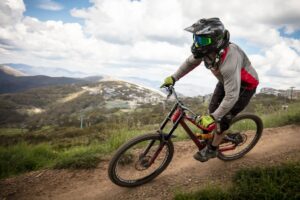Are you sitting comfortably? The bike-fit experience and why you should try it

Over the last few years, professional bike fits – that is a formal assessment of how the geometry and settings of your bike can best be aligned with your body shape and dimensions to maximise your riding performance and comfort – have become increasingly popular for the amateur cyclist and triathlete. No longer the preserve of elite cyclists, bike fit services are increasingly available from cycle stores or specialist bike fit studios across the UK. But given the cost for a professional bike fit in the UK can start from £200 and rise to (a staggering) £700, is it really worth the investment and what should you expect from the experience?
Before we assess the cost/benefit equation, we should start by asking the obvious question of when to do a bike fit? Should you do the bike fit before you buy your bike (to influence your selection of make/style of bike) or after (and use the bike fit to adjust your new bike in situ).
I have done both.
My first ever bike fit was in my early days of competitive triathlon; I was going to upgrade my bike to an aero road bike so wanted to understand if there was a make/type of bike that would optimally fit my body shape and size. So, while my bike fit gave me the obvious set up geometry like saddle height / incline and handlebar height/distance – I think the real value was picking the bike fitter’s brain on the makes that would suit me.
However I would now recommend the approach I took at my last bike fit – buy the bike first, then go for the fitting. There is nothing quite like sitting on your bike (settling into your saddle, leaning on your handlebar, turning the pedals on your crankshaft) and getting a professional to observe, record, measure and adjust how your body responds. I had recently invested in my first proper triathlon bike, complete with tri-bars and electronic gears (see my previous blog here) so now was an obvious time to optimise the set up before the start of the competition season.
On a bright and sunny pre-season Saturday in March I pitched up at the University of Birmingham for my 3 hour bike fit appointment with Bianca at Fit Your Bike. One of the reasons for choosing this studio – after a fair amount of research – was the fact that they bring insights from biomechanics and physiotherapy, as well as expertise in bike geometry and performance. Most of my physio appointments have been to fix injuries sustained in running or cycling, so the prospect of getting a physio to take a scientific look at my bike and body – with a view to preventing injuries – seemed like a sensible investment for starters. Bianca did not disappoint; she took the first hour to examine my flexibility, look at my range of movement, assess my foot structure and arch – as well as quiz me about my past injuries and take the detailed body measurements that would help with the bike set up later. I may be a fairly standard 70kg weight 178cm height male – but Bianca was like an archaeologist, digging for insights into my calf strains, lower back numbness and in between the shoulder blade stiffness. And of course, she took the time to understand the type and intensity of training I was doing and the type and distance of races I was training for.
So with my bright and shiny new Cervelo P Series triathlon bike set up on the turbo trainer, I felt I was ready to be ‘optimally adjusted’. Not so fast, Geraint. There are some quick and easy adjustments you can make without the 3D motion capture and analysis provided by the Retül software. Just by looking at my shoes, for example, Bianca could see that my cleats were a little too far forward for my feet – and probably limiting my power output on each pedal stroke – and so adjusted them accordingly. She also suggested I could – at a later stage – experiment with insoles to improve my foot contact at the pedal, which is particularly relevant for a high-arched biped like me.

Of course the real value of a bike fit is the 3D motion analysis to observe your movement and anatomy as you pedal. For this you have to have position markers and wires stuck to all your joints in motion from shoulders to toes. [Trust me, it is not as uncomfortable as it sounds] Crucially, it provides a precise and measured observation of your pedalling dynamics and interaction with the bike; it can therefore identify potential problem areas that would be invisible to the naked eye – such as the straightness of your knee path movement as you pedal. Think about it – when you are on the bike you are performing a limited range of motion involving your leg muscles and knee/ankle joints – and repeating it thousands of times. The promise of a professional bike fit is that it uses science to scrutinise the interaction of your body with your bike to help you improve the efficiency of your pedalling and the comfort of the ride. After each round of filming, Bianca would come over and make micro adjustments to critical settings, including saddle (height, angle, forward/back position) and tribars (height, forward position, situation and angle of elbow rests), and then go back to film and analyse – all the while asking me if/how it felt different with each adjustment.
By far and away the highlight of my bike fit was the chance to try out alternative saddles. I mentioned in passing at the start that the saddle that came with the bike felt a little uncomfortable. While comfort is not necessarily high on my agenda for Sprint or Standard distance races, it does make the prospect of Middle Distance or Ironman much less appealing – even if it is called an ‘endurance’ sport.
Cue the saddle pressure pads.
By placing a pressure sensor cover on my saddle and getting me to pedal hard, Bianca was able to see visually where the pressure was ‘in the red’ and therefore why my saddle was not ‘optimally suited to my sit bone anatomy’ (physio-speak for ‘flippin’ uncomfortable’). But what alternative saddle would suit my rear end?
Cue the collection box of saddles.
From a selection of around 30 or so different saddle types / makes stored in the studio, Bianca was able to select 3 or 4 that, based on the pressure readings, would be more suited to my anatomy. Each in turn came out of the box, was fitted to my saddle stem, the pressure pad placed on top, and off I pedalled for a few minutes. Rather than placing my judgement solely on how it felt, I was able to look at the pressure distribution generated by each saddle on screen. By combining saddle ‘sense’ and saddle science I was able to quickly land on my preferred saddle with a level of confidence I have rarely experienced in cycling related purchases.
After spending 3 hours in the studio – and around half of that on an off the bike as micro adjustments were made – what the bike fit gave me was the assurance that the set up of my bike, and my positioning on it, was probably as optimal as it could get (…without going into a wind tunnel). And along the way we experimented with slight positional variations like ‘aero tuck’, head position and ‘puppy paws’ on the tri bars, so I could get used to the feel of pushing myself to the limit.

So was it worth it?
Unequivocally yes! – both in terms of comfort and performance: I took part in a middle distance aquabike in August and the whole 56 mile ride was noticeably so much more comfortable that I could have hoped. The saddle felt snug and I experienced none of the lower back pain or neck stiffness that I was afraid of.
In terms of performance, my competition results have exceeded my expectations. My wife would roll her eyes at my bragging, but in September I clocked up one of the fastest bike times for my Age Group in the rain-drenched Bournemouth Triathlon, then the following month – buoyed by the confidence that my bike set up was indeed optimal – I managed 13th place in my Age Group at the sun-drenched World Championships in Torremolinos.
Of course, there are so many factors that go into race performance – but just going by the comfort and ease with which I now ride – based on the observation and science of a skilled practitioner – I am convinced that professional bike fits are so worth the investment.
I know my neck, back, shoulders, knees, ankles and ischial tuberosity (sit bones) would agree.







